The Halls Are Decked at The Met Cloisters
«In celebration of the holiday season, the festively decorated entryways and galleries at The Met Cloisters are on view through January 8. Our unique decorations all use fresh plant materials associated with the medieval celebration of Christmastide, the 12 days between the Nativity and the Epiphany. The process is highly labor intensive and the work of many hands, provided by both staff and gardens volunteers over the course of many weeks.»
Visual evidence for medieval holiday decorations is extremely rare, but references in carols and other sources provide information that informed the design of our decorations. Evergreens feature heavily because they were particularly important plants in medieval Europe during this festive time of year. Used in both domestic and sacred spaces, plants were believed to be agents of blessing and providers of protection. Evergreens were reminders of the coming spring and of the promise of eternal life since they remained green while other trees were bare.
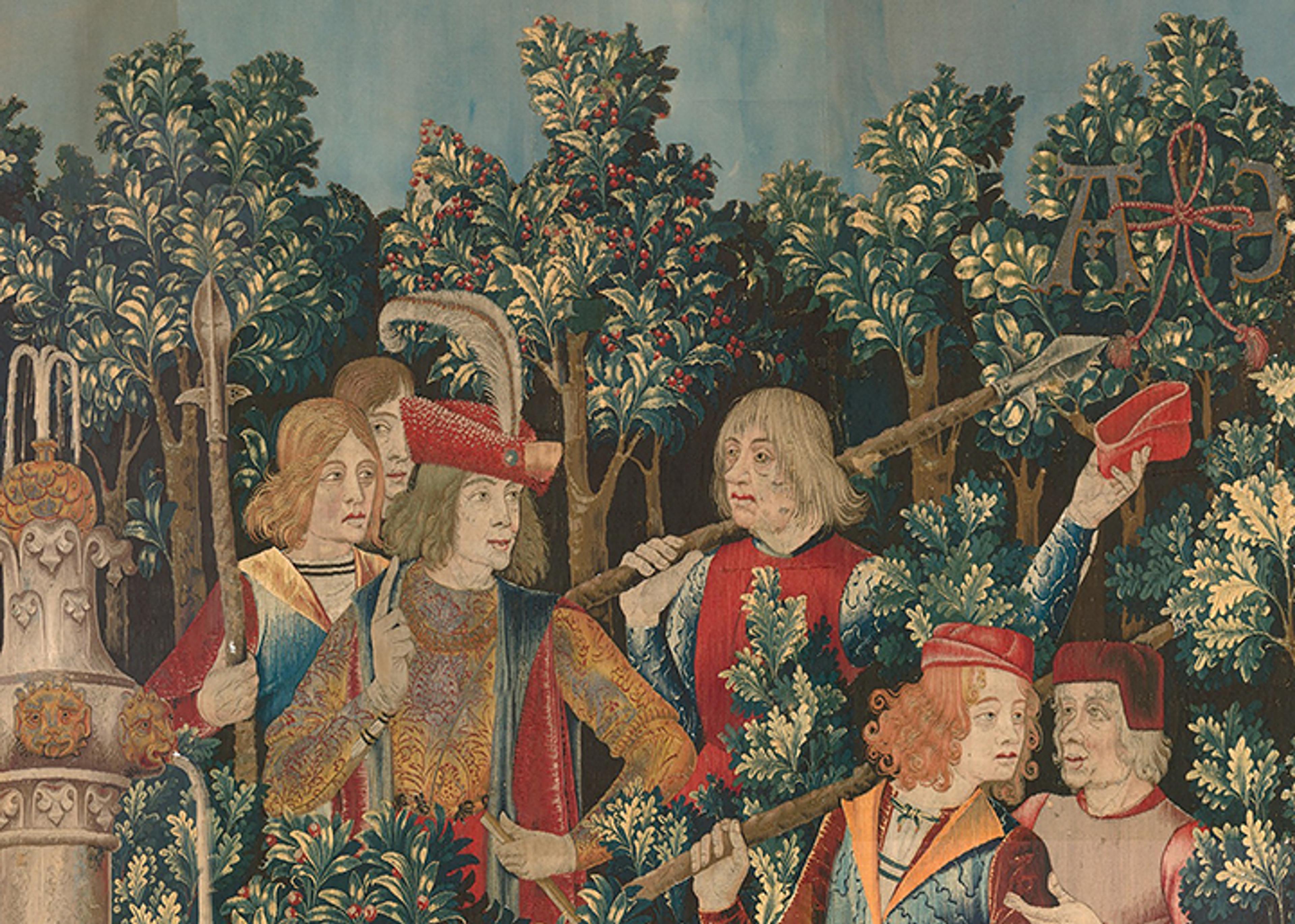
One of many fine holly trees depicted in these famous tapestries; note the holly at the upper center, beside the hunter with the plumed cap. The Unicorn Is Found (from the Unicorn Tapestries) (detail), 1495–1505. South Netherlandish. Wool warp with wool, silk, silver, and gilt wefts, 145 x 149 in. (368.3 x 378.5 cm). The Metropolitan Museum of Art, New York, Gift of John D. Rockefeller Jr., 1937 (37.80.2)
Holly and ivy are the most significant plants associated with Christmastide, both of which also played important roles in pagan tradition and still appear in the Christmas carols sung today. In the Middle Ages, holly's bright-red berries were symbolic of the blood of Christ, while the black fruits of ivy were identified with the Virgin. In this 15th-century carol, holly and ivy were also imagined as part of a ritual contest:
Holy stond in the hall
Faire to behold:
Ivy stond without the dore—
She is full sore acold.
Holy and his mery men
They daunsen and they sing;
Ivy and her maidens
They wepen and they wring.
Holly was identified as male and symbolized light and warmth, while ivy was identified as female and symbolized darkness and cold. Since holly was apotropaic (or, seen as capable of warding off evil and bad luck), it was often placed over a doorway to bless and protect those who passed under it.

The holly arch at the Postern Gate entrance. We have sourced our English holly from the same family farm in Oregon for many years. Its safe delivery heralds the beginning of the holiday season. Photos by the author
At the Museum, visitors pass beneath an arch fashioned of English holly; holly trees can also be seen beside the doorway, along the drives, and in the Trie Cloister garden. Ivy appears among other plant materials in the four arches that decorate the doorways in the Main Hall as well as an arch in the Saint-Guilhem Cloister and in smaller wreaths and garlands on display in other galleries.
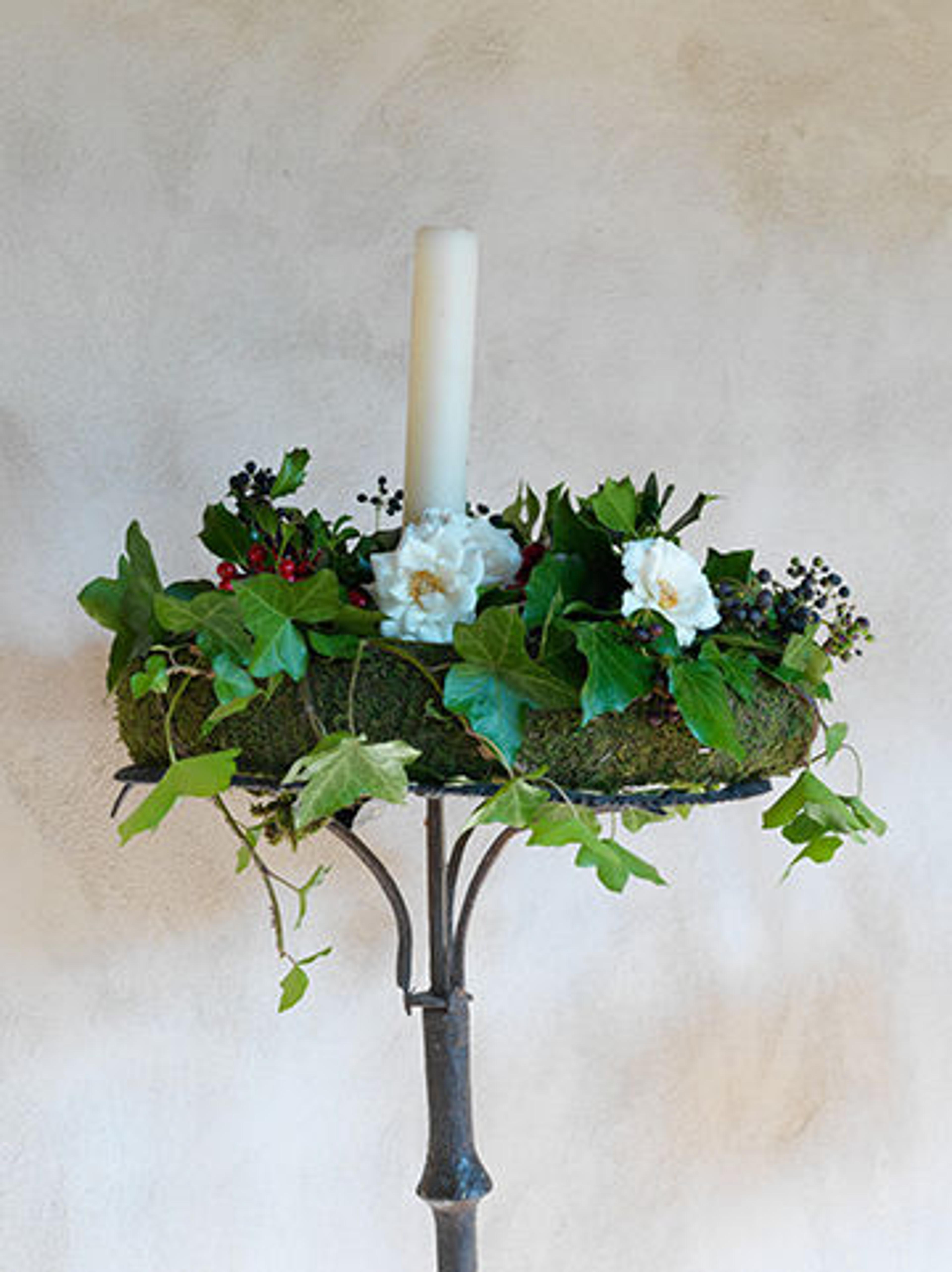
Right: A candelabrum in the Cuxa Cloister wreathed in white roses, ivy, and holly.
Apples and nuts, stored and eaten throughout the winter, were symbols of fertility, and appear in many representations of the Virgin and Child, such as this painting by Joos van Cleve. At the Museum, bosses of local lady apples and hazelnuts from Oregon are displayed with rose hips. Roses, as told in carols and popular stories, miraculously bloomed well out of season on Christmas Eve. White roses will appear throughout the season on small wreaths and garlands that decorate the various candelabra in some galleries. Seasonal plants, like cyclamen and hellebore, will be located in the Saint-Guilhem and Cuxa Cloisters as well.
Left: Simon Bening (Netherlandish, 1483/84–1561). Book of Hours (detail, folio 52), ca. 1530–35. Tempera, gold, and ink on parchment, 2 5/16 x 1 5/8 in. (5.9 x 4.2 cm). The Metropolitan Museum of Art, New York, Purchase, The Cloisters Collection, 2015 (2015.706)

A sheaf of wheat often appears in medieval and Early Netherlandish Nativity scenes, where it alludes to the sacramental aspect of Christ's birth. The detail from the Nativity miniature in Simon Bening's tiny Book of Hours (the closed manuscript measures only 2 1/2 by 2 by 1 1/8 inches) includes a bundle of wheat directly behind the manger. The final decorative element in the galleries, a wheat sheaf is placed beside the 13th-century altar frontal in the Langon Chapel to reflect this iconography. Customs involving wheat included saving a sheaf from the harvest to create a special dish called frumenty to celebrate the new year. It was also served, to the sheep and cattle, as a celebratory meal or scattered in the streets, in keeping with Saint Francis's wish to welcome birds in the Christmas feast.
Just a few of the many steps involved in creating the decorations on display are illustrated below. We hope many of our readers will be able to visit during the holidays, a very special time of year at the Museum.
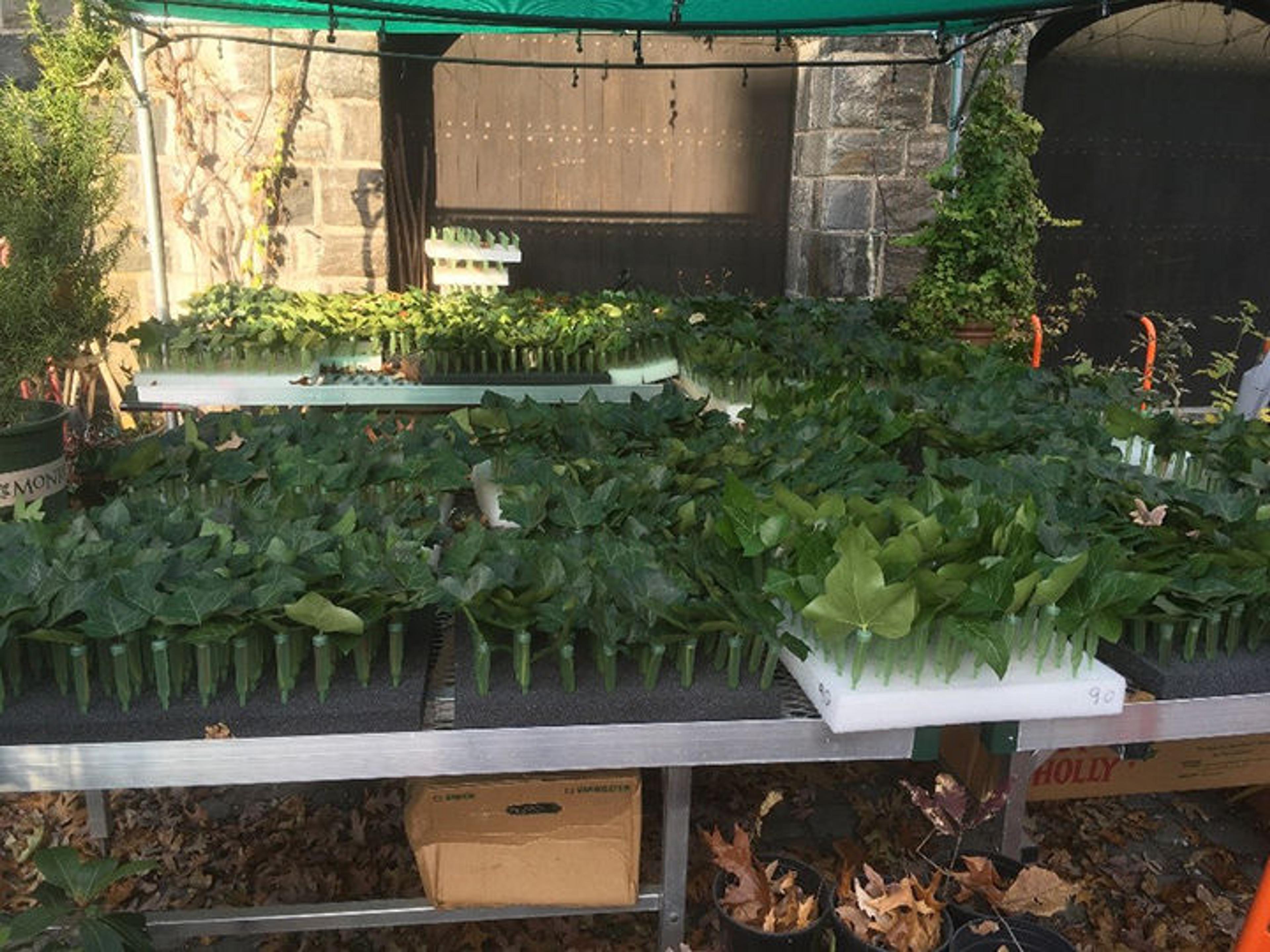
Ivy leaves awaiting use. Photo by Tessa Huxley
The 3,000 ivy leaves used in the decorations were picked by the staff in Fort Tryon Park just after Thanksgiving. The individual leaves were washed and each was inserted into a water-filled floral pick.
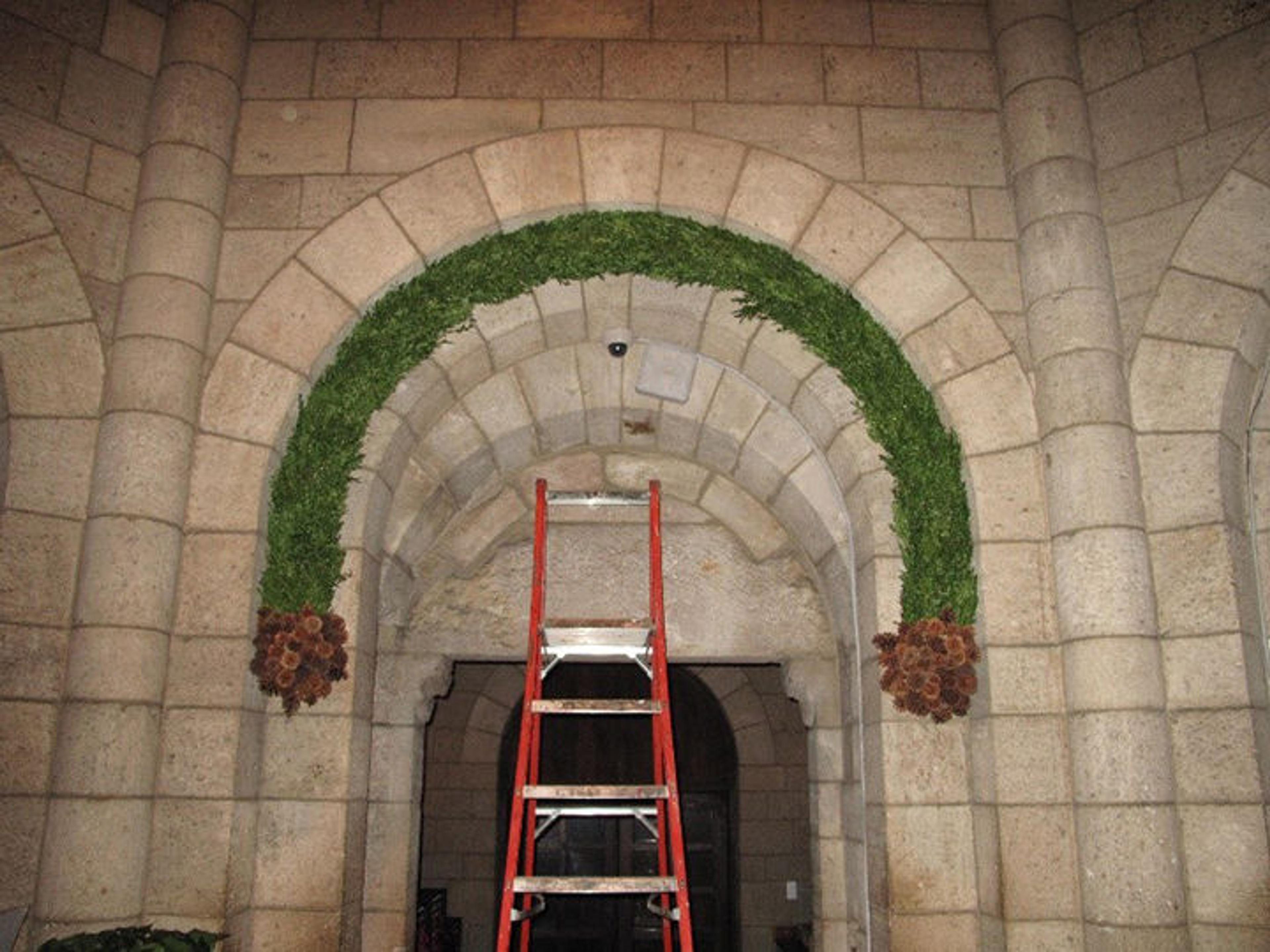
Main Hall arch installed, but not yet decorated. Photo by Tessa Huxley
The Main Hall arches are built on a wooden form, which is then covered in straw and boxwood to provide a foundation for the decorative elements. Installed partially finished in the morning before we open to the public, the gardens staff and volunteers decorate the arches when the Museum is closed.
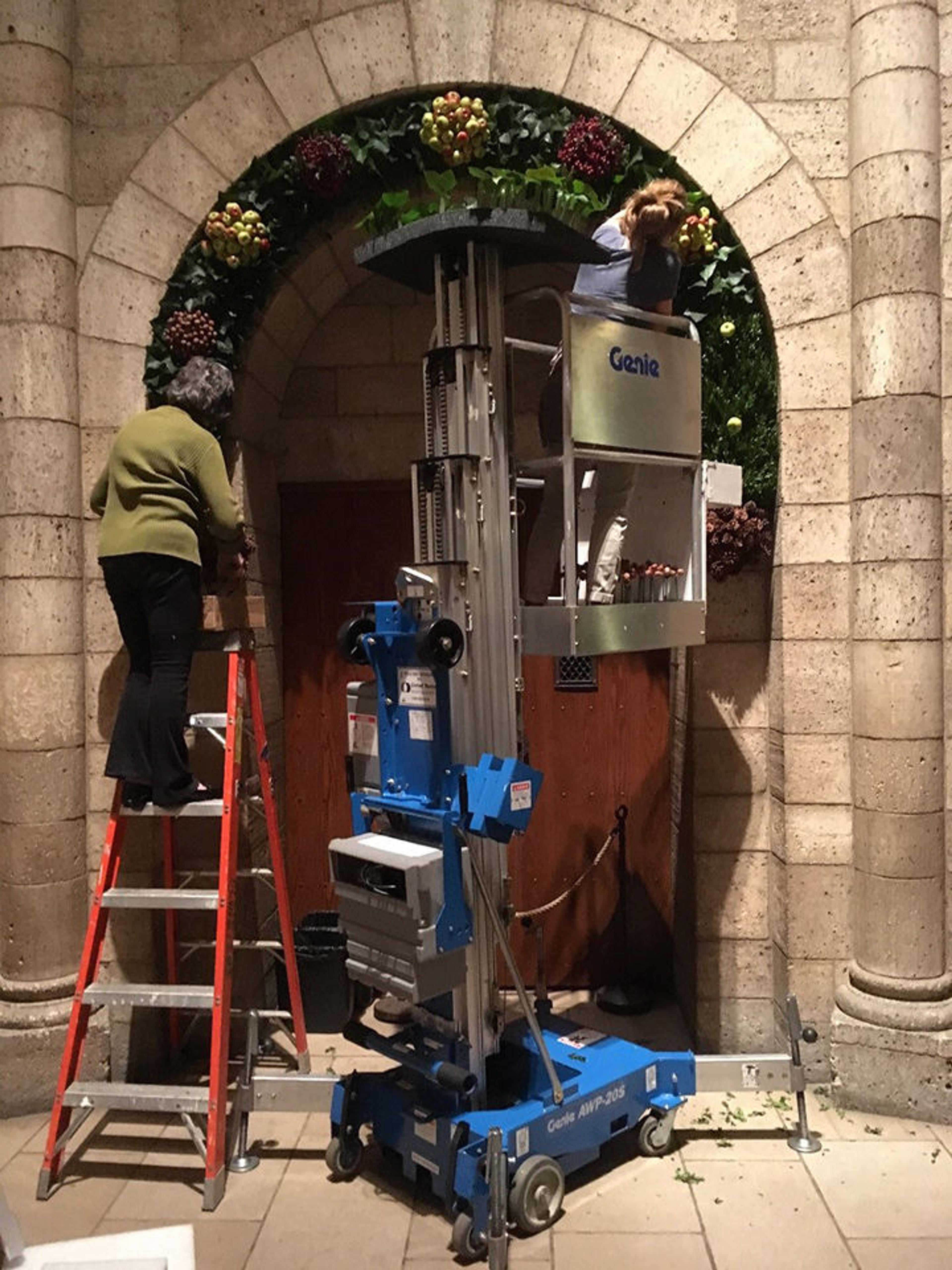
Main Hall arch nearly complete with bosses of lady apples, rose hips, and hazelnuts. Photo by Tessa Huxley
Nuala Outes and Carly Still decorate one of the Main Hall arches with lady apples, rose hips, hazelnuts, and ivy.
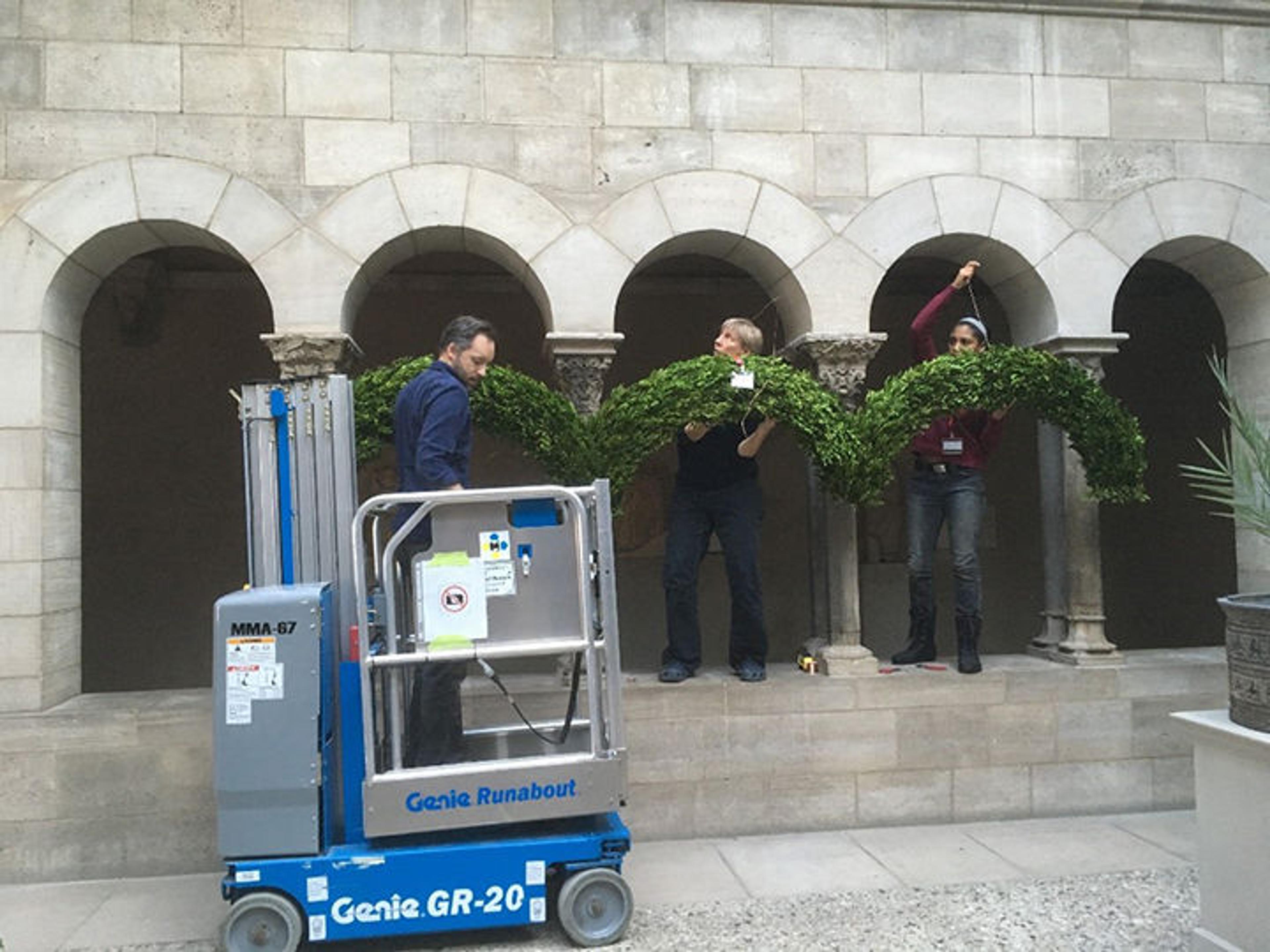
Arches being installed in the Saint-Guilhem Cloister. The boxwood surface will be covered in ivy leaves once the arch is in place. Photo by Carly Still
A recent addition to our Christmastide decorations is this ivy-covered series of arches. Andrew Winslow, Tessa Huxley, and Yvette Weaver lift it into place above the north arcade in the Saint-Guilhem Cloister.
Christina Alphonso
Christina Alphonso is the administrator at The Met Cloisters.